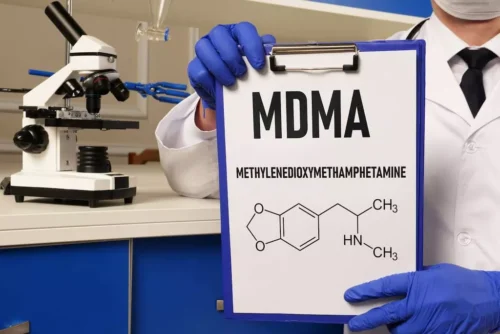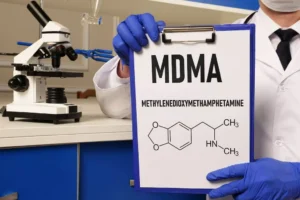Facts About Excessive Drinking Drink Less Campaign

CUnclear risk of selection bias and attrition bias in more than one study. AUnclear risk of selection bias and attrition bias in more than one study. Information and shareable resources to help others choose to drink less alcohol and be their best. The cost of excessive alcohol use impacts everyone, whether they drink or not. Alcohol also causes damage how does alcohol affect high blood pressure to the liver over time, especially if you drink too much.

Researchers
- Some investigators have suggested that drinking wine may offer more protection against CV disease because it contains polyphenols, such as resveratrol and flavonoids, which are micronutrients with antioxidant activity (Tangney and Rasmussen 2013).
- This measurement takes into account the systolic blood pressure and the diastolic blood pressure.
- Several RCTs have reported the magnitude of effect of alcohol on blood pressure, but because those trials are small, their findings are not sufficient to justify a strong conclusion.
This can cause you to develop an irregular heartbeat, called atrial fibrillation, which can increase your risk of stroke, heart attack and heart failure. On average, a regular heart rate is about 60 to 100 beats per minute when your body is at rest. But alcohol can lead to your heart rate temporarily jumping up in speed, and if it goes over 100 beats per minute, it can cause a condition called tachycardia.
Accelerated Protein Degradation
Karatzi 2005 mentioned the method of blinding of participants, but it is not clear whether involved personnel were blinded as well. The method of blinding of participants and personnel was not mentioned in Dumont 2010, Mahmud 2002, and Maule 1993. In Cheyne 2004, participants were blinded to the content of the drink, but some reported that they were able to detect the alcohol by taste at the end of the study. Different types of alcoholic beverages including red wine, white wine, beer, and vodka were used among 32 studies. The dose of alcohol ranged between 0.35 mg/kg and 1.3 g/kg, and alcohol was consumed over five minutes and over one hour and 30 minutes. It is important to note that the dose of alcohol was comparatively higher (≥ 60 g or ≥ 1 g/kg) in nine studies (Bau 2005; Buckman 2015; Hering 2011; Narkiewicz 2000; Rosito 1999; Rossinen 1997; Stott 1987; Van De Borne 1997; Zeichner 1985).
How does alcohol affect my heart?
The search was conducted up to March 2019 and resulted in 6869 citations. After de‐duplication and screening of titles and abstracts, we were left with 482 citations for further assessment. We retrieved full‐text articles for those citations and included 32 studies (Figure 1). To understand how much alcohol is too much, it may be helpful to know what excessive drinking means. These effects can also impact the safety and well-being of people around you. One unit of alcohol is around 8g, which is 56kcal or the equivalent calories of one custard cream.
- Acute administration of alcohol stimulates the release of histamine and endorphin, which interferes with baroreflex sensitivity (Carretta 1988).
- For a lot of people on long-term medications, alcohol can make the drug less effective.
- The researchers found that the alcohol-drinking subjects (particularly those who were insulin sensitive) had higher insulin levels and a slower rise in glucose levels after a low-carb meal.
- So, it was not possible to conduct a subgroup analysis based on blood pressure.
How to reduce high blood pressure
Infection or other stressful events also can lead to immune-triggered platelet production, a condition called rebound thrombocytosis, which may occur immediately after withdrawal from both heavy and one-time heavy (binge) drinking (Numminen et al. 1996). Although https://ecosoberhouse.com/ highly individualized and dose dependent, alcohol use also can increase bleeding time (i.e., taking longer to develop a clot)(Salem and Laposata 2005). Heart rate was increased following alcohol consumption regardless of the dose of alcohol. Alcohol has been shown to slow down parasympathetic nervous activity and to stimulate sympathetic nervous activity.
- The reason for exclusion was documented for each citation at the full‐text level.
- More RCTs are needed to study the effects of low‐dose alcohol to better delineate the dose‐response effects of alcohol on BP and heart rate.
- If you want to cut down, a great way is to have several drink-free days a week.
- The blood alcohol level decreased over time, and 20‐HETE started to rise (Barden 2013).

Among the 34 included studies, only four studies included hypertensive participants. So, it was not possible to conduct a subgroup analysis based on blood pressure. For the planned subgroup analysis based on sex, no study reported male and female participant data separately.

On the other hand, Fantin 2016 allowed participants to continue drinking during the period of outcome measurement. These differences in alcohol consumption duration and in outcome measurement times probably contributed to the wide variation in blood pressure in these studies and affected overall results of the meta‐analysis. Several RCTs have reported the magnitude of effect of alcohol on blood pressure, but because those trials are small, their findings are not sufficient to justify a strong conclusion. In 2005, McFadden and colleagues conducted a systematic review of RCTs, which investigated the haemodynamic effects of daily consumption of alcohol (McFadden 2005). Based on nine RCTs in which participants consumed alcohol repeatedly over days, these review authors reported that alcohol increases SBP by 2.7 mmHg and DBP by 1.4 mmHg.
